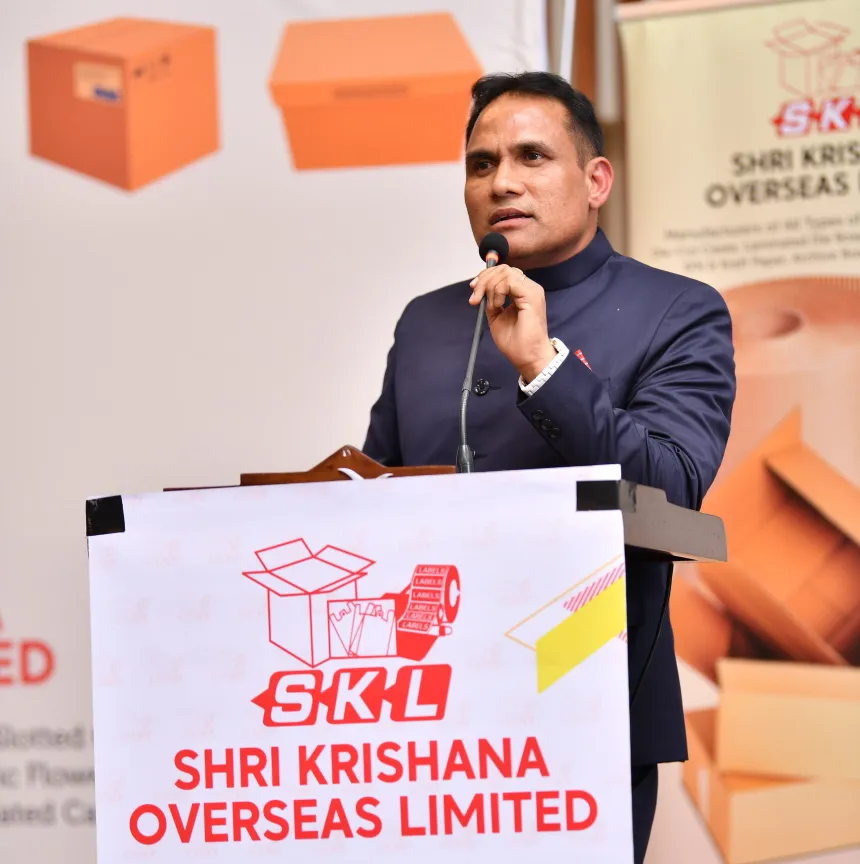From Growth Story to Red Flag What NSE’s Newcomer Tells Global Investors
Shri Krishana (NSE: SKOP) warns of >25% profit drop after H1 net fell 70% to KSh 2m. Borrowings hit KSh 150m, debt-to-equity 2.1×, interest cover just 1.16×. With Kenya’s 364-day T-bill at 17% and KES near 154/USD, survival hinges on Kisaju plant execution.

Shri Krishana Overseas PLC, one of the newest listings on the Nairobi Securities Exchange (NSE: SKOP), has issued a profit warning after its half-year net profit collapsed by 70.4 percent to just KSh 2.0 million (≈ USD 15,000) compared with KSh 6.85 million (≈ USD 51,000) a year earlier. The collapse reflects the strain of rising borrowing costs linked to the Kisaju expansion project, which aims to boost annual packaging capacity from 3,000 tonnes to 22,000 tonnes by 2026. Instead of delivering growth momentum, the leverage strategy has left the balance sheet exposed, liquidity weak, and investor confidence shaken.
Revenue fell 5.8 percent to KSh 158.7 million (≈ USD 1.2 million), while gross margin held at 30.5 percent. Finance costs surged 53.5 percent to KSh 15.9 million, driven by total borrowings that ballooned to KSh 150.2 million. The company’s debt-to-equity ratio spiked to 2.1×, compared with 0.6× last year, while interest coverage slipped to just 1.16×, barely sufficient to service obligations. Operating cash flow fell 74 percent to KSh 2.17 million, leaving little headroom for further shocks.
This financial profile is risky in Kenya’s current macro environment. Government borrowing costs remain elevated, with the 364-day Treasury bill yielding nearly 17 percent, while the Central Bank of Kenya maintains a benchmark rate above 13 percent. With sovereign paper offering double-digit yields, corporate borrowers like Shri Krishana face steep financing costs. For comparison, larger NSE-listed industrials such as EABL (NSE: EABL), BAT Kenya (NSE: BATK), and BAMBURI (NSE: BAMB) maintain more conservative leverage profiles and stronger cash generation, highlighting the gap between established players and newcomers.
The firm’s expansion strategy is ambitious but fraught with timing risk. Civil works for the Kisaju facility are due to complete by November 2025, with phased commissioning before year-end. If on schedule, capacity could increase seven-fold, potentially unlocking economies of scale and export opportunities into East Africa. But with net margin already down to 1.3 percent, any delays or underutilization would intensify financial stress. For a newly listed stock, such volatility raises questions about governance, execution, and the prudence of aggressive debt-funded growth.
Investor sentiment will be tested. The NSE, already struggling with low liquidity and foreign outflows, has seen manufacturing counters under pressure. Equity Bank (NSE: EQTY), Safaricom (NSE: SCOM), and KCB Group (NSE: KCB) dominate flows, while smaller industrials struggle to attract meaningful foreign participation. A profit warning so soon after listing could price a persistent risk discount into SKOP shares, narrowing funding options just as capex peaks.
Global investors watching Kenya’s frontier market will view Shri Krishana as a cautionary case. Leverage can accelerate growth, but in environments where interest rates are high and capital scarce, it can just as quickly become a liability. With Brent crude (ICE: LCOc1) trading near USD 88 and U.S. 10-year yields (US10Y) above 4.5 percent, global funding costs remain tight, reducing the chance of cheap refinancing. This makes execution discipline critical: timely commissioning, stable demand, and cost control will determine whether the expansion pays off or forces financial restructuring.
Sector linkages raise further stakes. Shri Krishana supplies packaging to horticulture exporters and FMCG clients. Passing on higher input costs could squeeze Kenya’s export margins at a time when the shilling (KES) remains volatile, trading near 154 per USD. Alternatively, absorbing the costs to defend market share risks further profit erosion. Either choice carries implications for Kenya’s wider export competitiveness and for listed agribusiness firms such as Kakuzi (NSE: KUKZ) or Sasini (NSE: SASN).
The company’s warning therefore reverberates beyond its balance sheet. It illustrates the fragility of debt-driven expansion in emerging markets and highlights why institutional investors demand stronger governance and conservative financing structures before allocating to manufacturing IPOs. The second half of 2025 will determine whether Shri Krishana’s story becomes one of disciplined turnaround and scaling, or a cautionary example of overreach in a high-rate frontier environment.





